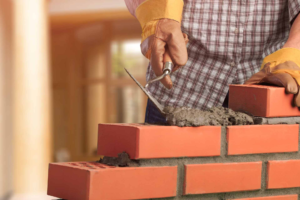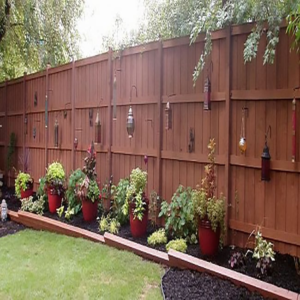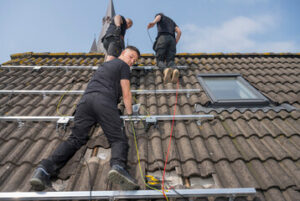Bricklayer Perth are skilled builders who construct, repair, and maintain building walls. They may also be responsible for laying and concreting foundations for new construction. They can undertake this work by completing a certificate or an apprenticeship or working on the construction site as part of their employment.
They typically work with traditional bricks and concrete cinder blocks but can also work with structural tiles, salvaged bricks, and chunks of marble. The job requires stamina and strength to perform productive work throughout shifts and weather changes.

Bricklayers use bricks and other building blocks in mortar to construct or repair walls, houses, and other structures. They usually work as part of a team with other construction professionals and must be able to follow blueprints and specifications. This job can be physically demanding, particularly when laying bricks at height. Bricklayers may also need to erect and dismantle scaffolding on large construction projects and should know the safety requirements.
Bricklaying is a skilled trade that requires training and on-the-job experience. Some bricklayers start their career with an apprenticeship, earning money while learning the business fundamentals from an experienced journey bricklayer or mason. Others attend a vocational or trade school, receiving classroom instruction and hands-on experience working on real-world construction sites.
A bricklayer’s responsibilities include interpreting work orders, determining the materials required, and laying and stacking brick courses under the blueprints. They must also be proficient in cutting and shaping bricks with various tools. Other duties include:
- Grouting.
- Repairing and maintaining brickwork.
- Using various hand tools and power equipment.
- Fastening bricks with wire clamps or cement.
Some bricklayers are responsible for constructing foundations and resurfacing roads, while others may specialize in decorative brickwork or stone masonry.
Many qualifications to become a bricklayer include a high school diploma and on-the-job training. Those interested in this career should be able to read and interpret diagrams and specifications and have a valid CSCS card for most on-site jobs. They should also be proficient in using various construction tools and equipment, including power saws, concrete mixing machinery, and masonry chisels. In addition, they should have good verbal communication skills and be able to work safely on a construction site.
A bricklayer’s duties include preparing and laying concrete for footings, foundations, and other structures. They may also be responsible for constructing and repairing walls, fireplaces, arches, chimneys, and other structures. Sometimes, they may need to erect and dismantle ladders, swing stages, and scaffolding. They should also be familiar with the safety requirements of each site and wear protective gear such as gloves, ear defenders, and work boots.
A high school education is usually required for those who want to become bricklayers. It is important to take vocational courses in shop, basic mathematics, blueprint reading, and mechanical drawing. These skills can help you later in your career as a bricklayer or mason.
The most common way to start a bricklaying career is to find an apprenticeship with a construction firm. This involves classroom studies and on-the-job training under a master bricklayer or mason. Apprentices begin at about fifty percent of a qualified journey bricklayer’s hourly wage and work up to the full rate. Apprenticeships are available through local unions and some colleges.
In addition to on-the-job training, bricklayers receive classroom instruction that can include the science of building materials and how to read and interpret blueprints. They must understand how to use hand tools like hammers and levels and power equipment like sled hammers and hydraulic jacks. Bricklayers should proficiently use masonry tools such as chisels and special saws. They should also have good verbal communication skills to interact with supervisors, engineers, and clients.
Some bricklayers also specialize in particular types of masonry. For example, a tuck pointer repairs damaged mortar in existing masonry structures. Other specializations include brick veneering, full brick construction, and repair of partitions and arches. Masons may also choose to focus on decorative brickwork or stone masonry.
While bricklayers work with traditional clay bricks, concrete cinder blocks, and other building materials, they can also build with structural tiles, chunks of marble, and terra cotta blocks. They must have a solid understanding of the science of construction materials and occupational health and safety regulations.
Bricklayers and masons must complete at least four years of apprenticeship and classroom study to qualify for trade certification. Then, they can apply to write the interprovincial journeyperson’s exam. This will allow them to move into more advanced roles like supervisor or site foreman. They can even start their own masonry company.
Bricklayers work on construction sites and repair structures. The job involves laying bricks, concrete blocks, stone, and other similar materials to construct or repair walls, arches, chimneys, fireplaces, and other structures under blueprints and specifications. They can also work in maintenance, repairing existing brick structures such as brick linings of industrial furnaces and kilns.
Bricklaying is a physically demanding job. It is often required to carry heavy loads, which could cause back or other physical injuries if not maintained properly. Moreover, bricklayers are needed to work at heights and on scaffolding. Falls from height are a common workplace accident and can lead to severe injuries. Working from a ladder can be dangerous, and it is recommended to use framed scaffolding instead.
The job requires good attention to detail and knowledge of safety and health issues. Bricklayers should always wear safety gear such as hard hats, dust masks, steel-capped boots, ear defenders, and gloves. They should also ensure they do not touch wet mortar, which can cause dermatitis or rashes. Inhaling wet cement dust can also cause respiratory problems.
Most bricklayers are employed as apprentices until they become qualified. They are normally paid a minimum of AU$ 40 per hour. In addition, they may receive time and a half for overtime work. They should also be aware that wages can vary from one region to another.
A bricklayer must have a strong, steady hand and the ability to read technical plans and diagrams. They must also be able to understand and follow directions. They must also be able to work well as part of a team. On larger jobs, bricklayers are often grouped into teams or gangs to complete projects on schedule. Some bricklayers specialize in ornamental brickwork or stonework and can make buildings and walls more attractive by using various styles and colors. They can also perform tuckpointing, filling areas where mortar has deteriorated or fallen out. This makes the bricks look new again. This is a highly skilled job and requires years of experience to master.
A variety of factors influence a bricklayer’s earnings. For example, novices typically earn less than seasoned professionals. However, their earning potential ascends over time as they acquire hands-on experience and build a portfolio of completed projects. The geographical setting also plays a crucial role, with urban areas typically offering higher wages than rural regions.
A qualified bricklayer can interpret building blueprints and lay the foundations for houses, roads, and sidewalks. They may also work on restoration projects to refurbish decorative stonework and other masonry structures. Whether new construction or repairing existing masonry, bricklayers must follow strict safety protocols to ensure on-site worker and client safety.
Bricklayers must possess various tools and equipment, from trowels and levels to scaffolding. They must operate these materials efficiently and accurately to achieve precise results. Furthermore, bricklayers need stamina to perform productive work throughout the shift and endure weather conditions.
Many bricklayers learn their trade through a formal apprenticeship with a reputable construction firm. These apprenticeships provide on-the-job training as well as classroom instruction. Apprentices typically start with lower wages than experienced bricklayers, but their earnings climb as they gain expertise and complete more complex tasks.
In addition to their construction skills, bricklayers must be familiar with various building codes and regulations to ensure the final structure meets local and state requirements. A good knowledge of how to read and understand blueprints and a strong grasp of geometry and math are essential.
Bricklayers must also have a strong work ethic and be able to meet deadlines. During peak periods, they often need to work overtime to finish a project on schedule. This is especially true for large-scale and complex projects.
Some bricklayers pursue additional education or certification to enhance their career prospects and earnings potential. These credentials can help them secure more lucrative job opportunities or qualify for supervisory roles. It is also possible for bricklayers to increase their salaries by changing employers.


